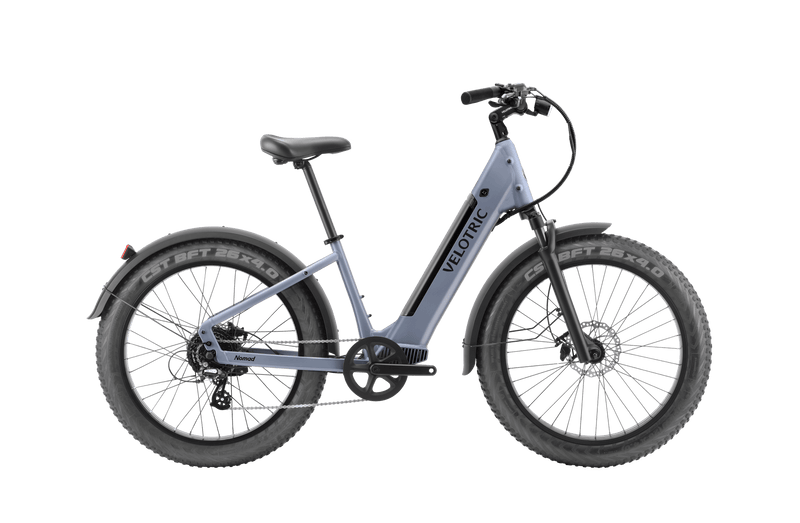Key takeaways
- While New York has the longest average commute time by car (71 minutes), only 34.4% of employees in this city commute this way.
- More Boston employees commute by walking, biking, motorcycle, or taxi than those in any other city (22.2%).
- Commuters would burn 5.4 times more calories if they commuted by bike rather than by car.
- Based on the average national commute times, gas prices, and fuel-efficiency, the average American (driving 30 mph) spends up to $1,026 commuting each year.
Making the most of a commute
Commuting to and from work is when many of us glaze over, often sitting in a stationary position for a long time. We write off the physical and financial impacts of commuting as collateral sacrifices necessary to earn our livelihoods. But it makes you wonder, are there any solutions to avoid these pitfalls and make the most of our daily commute?
To quantify how much money, time, and activity commuters could gain by switching to cycling, we analyzed workers’ commutes in 50 of the largest U.S. cities. Here’s what we found:
Commuting by bike instead of car
So, how would your commute by car measure up against commuting by bike? To find out exactly how much money and time can be saved (and exercise gained!), we created this easy-to-use commuting calculator. In a world of record-high gas prices, automobile MSRPs, and maintenance costs, it’s worth taking a look!
With a few simple details, we can calculate and compare the features of your commute by car versus cycling. To get started, enter the basic details of your commute, including:
- Your origin and destination addresses
- How many days per week you commute
- Desired arrival time
- The MPG of your vehicle
- Your weight
For a commute by car, we calculate a recommended departure time (based on your desired arrival time), the total minutes and dollars you’ll spend per week, and how many calories you’ll burn daily and weekly.
For a cycle commute, we calculate recommended departure time, total minutes spent commuting per week, and the total calories burned daily and weekly.
Using these variables, we also compare the two modes of transportation:
- The time each commute will take
- How much you can save on gas by cycling to work
- How many more calories you will burn cycling versus driving
How are people commuting?
We’ve just determined that cycling to work, as opposed to driving, can have benefits. But what does the average commute look like for American workers? Here, we’ll look at how people commute and how long it takes them.

Based on our findings, the average American has spent 51.6 minutes a day commuting. New York City had the longest average commute time by car (71 minutes), but the average NYC cycle commuter saved 30 minutes a day compared to a car commuter. Bike commuters in many other cities also saved time — 45 out of 50 of the largest American cities, to be exact. In the six cities where cycle commuting took longer than car commutes, the average cycle commute was 9.4 minutes longer than the drive.
Today, the average percentage of city workers who said they cycle, walk, take a taxi, or motorcycle to work is 7.9%. But Boston had more types of these commuters than any other city — 22.2% of its workforce! Washington, D.C. and San Francisco weren’t far behind, with 22.1% and 21.3% of their commuters riding bikes to work, respectively.
Boston actually has an initiative in place aimed at quadrupling cycle commuting by 2030 by ensuring access to the greenest, most equitable, and most efficient transportation. This effort hopes to decrease carbon emissions and support the city’s growing population and economy. Perhaps more cities will follow suit and invest in this reimagination of the daily commute.
Staying fit on your commute
Cycling is good for the planet, and can also save time. But what about its effects on our bodies? Next, we analyzed the number of calories burned during the average city worker’s commute in a car versus on a bike.

Car commuters in all 50 cities burned around the same number of calories during their drives — an average of around 70 per commute. But bike commuters burned 5.4 times more. Many factors affect the number of calories burned while cycling, including pace, duration, resistance, intensity, and the cyclist’s height and weight.
Kansas City and Orlando cyclists burned the most during their daily commutes — an average of 692 and 684 calories, respectively. Even in the city with the lowest number of calories burned per cycle commute, Minneapolis, bike commuters still burned 4.9 times more calories than their driving counterparts.
Financial cost of commuting
We’re all familiar with paycheck deductions such as taxes, 401(k)s, and health insurance. But what about gas expenditures? Finally, we analyzed the average fuel costs for U.S. city workers based on average commutes, gas prices, and fuel-efficiency.

Based on average national commute times, gas prices, and vehicle fuel-efficiency, most American city dwellers have likely spent $1,026 commuting in the past year, driving at an average of 30 mph. This figure ranged from $663 to $1,745, depending on commuters’ locality. Other factors that may affect your annual gas spending include commute distance and your vehicle’s fuel-efficiency, as well as the price of gasoline, which rose an estimated 49% from January to June 2022.
A healthier commute
Choosing a bike commute can benefit your body, wallet, and the planet. Luckily, some cities, like Boston, are finding ways to make cycle commuting easier and get more cars off the road during rush hour. These changes might also save workers over $1,000 each year. So, what would you do with that extra money in your pocket and another hour in your day? Consider the switch to a bike commute, and find out!
Methodology
For this study, we built a calculator that asks for the starting address and destination of your commute, what time you plan to arrive, how often you commute, your vehicle’s fuel efficiency, and your weight. Based on this input, we programmed the output to show the time difference if you were to bike instead of drive, how much money you would save biking, and how many more calories you would burn biking.
In addition to the calculator, we sourced commuting time and methods data from the 2021 American Consumer Survey via the United States Census Bureau in order to analyze current commuting trends by city.
About Velotric Bike
Velotric Bike creates stylish, high-performance ebikes that are both safe and affordable. We work tirelessly to provide a simple and reliable experience for every cyclist.
Fair use statement
Please feel free to share this information for any noncommercial purposes. We just ask that you provide a link back to this page in doing so.







































